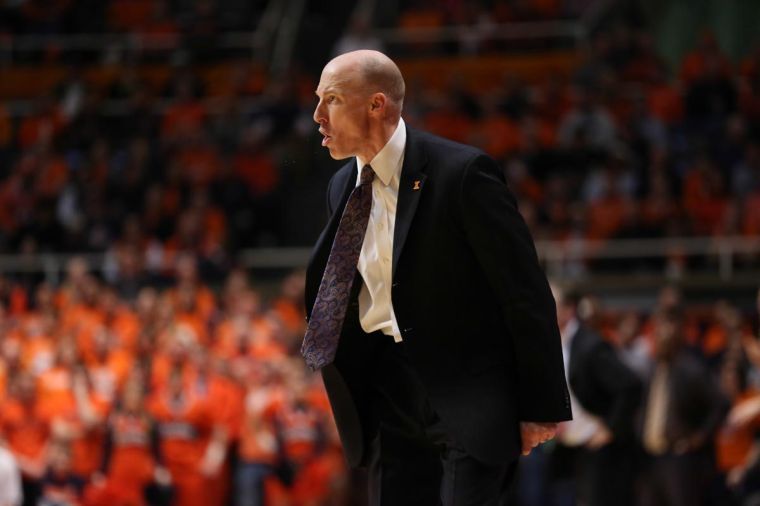Illinois’ offense historically bad under Groce
Illinois’ John Groce reacts to a call from the referee during the game against Michigan State at State Farm Center, on Jan. 18, 2014. The Illini lost, 78-62.
January 29, 2014
Since John Groce was introduced as Illinois’ head coach in March 2012, he has said he wants to instill an up-tempo offense led by strong point guard play.
Groce made recruiting a point guard his first priority for his first class and had Illinois hats on the final decision table of four-star point guards: Tyler Ennis, who is averaging 12.0 points per game and 5.4 assists per game for undefeated Syracuse, and Demetrius Jackson, who has been a solid contributor for Notre Dame this season. Instead, Groce signed three-star recruit Jaylon Tate of Simeon, who sported no other major conference offers.
In his second class, Groce went out in search of a star point guard again, and he thought he found his man in four-star recruit Quentin Snider, but Snider flipped to Louisville in November, and Groce was without his point guard once again.
All the while Groce has been searching for a point guard, his Illinois teams have been playing some of the worst offense in modern program history — led by poor point guard play.
In his first season in Champaign, Groce’s Illini had fewer assists per game (10.1) than any other Illini team since the 3-point era began in 1986, and this season’s Illini are on pace to record even fewer assists.
Get The Daily Illini in your inbox!
Illinois is also assisting a lower percentage of its shots than ever before. Since 1986, only three Illinois teams have assisted on less than 50 percent of its baskets: 1994-95 (48.2 percent), 2012-13 (42.5 percent) and 2013-14 (41.8 percent).
Since Groce has taken over, Tracy Abrams has been the starting point guard, averaging just 3.4 assists per game last season and 3.2 assists per game this season, leading the Illini.
Abrams has had some help this season. Tate has been more ready to play than expected and has averaged 2.4 assists in 14.7 minutes per game. Against Indiana on Sunday, Abrams was limited to 13 minutes and Tate had five assists, but they were the only assists of the game.
Poor point guard play can’t be entirely to blame for the offensive woes, however.
Last season, the Illini relied heavily on the 3-pointer, at one point leading the nation in 3-point field goals per game.
But his first team also made the long ball at a rate of 32.1 percent, the third-lowest rate since 1987-88, the second season of the 3-point era.
This season, Illinois’ 3-point field goal shooting at 30.5 percent, and the percentage should continue to be below last season’s total if Illinois continues to shoot anything near its 25.8 percent clip in Big Ten play.
The low 3-point percentage contributes to the lack of assists because 3-pointers are assisted on more often than 2-pointers. Overall, the Illini have averaged 41.2 percent from the field in each of the last two seasons, two of the three lowest totals in the modern era of the program.
Illinois’ shooting woes should be eased next season, as Illinois has two sharpshooters on the bench, transfers Ahmad Starks and Aaron Cosby each averaged 40 percent on 3-pointers last season, and Starks is the all-time leader in 3-pointers made at Oregon State.
While the transfers may help these historically bad offenses, and Tate will likely make strides forward, no new point guards will be joining the team next season, and Groce will continue his search for a point guard of the future.
Johnathan can be reached at [email protected] and @jhett93.







